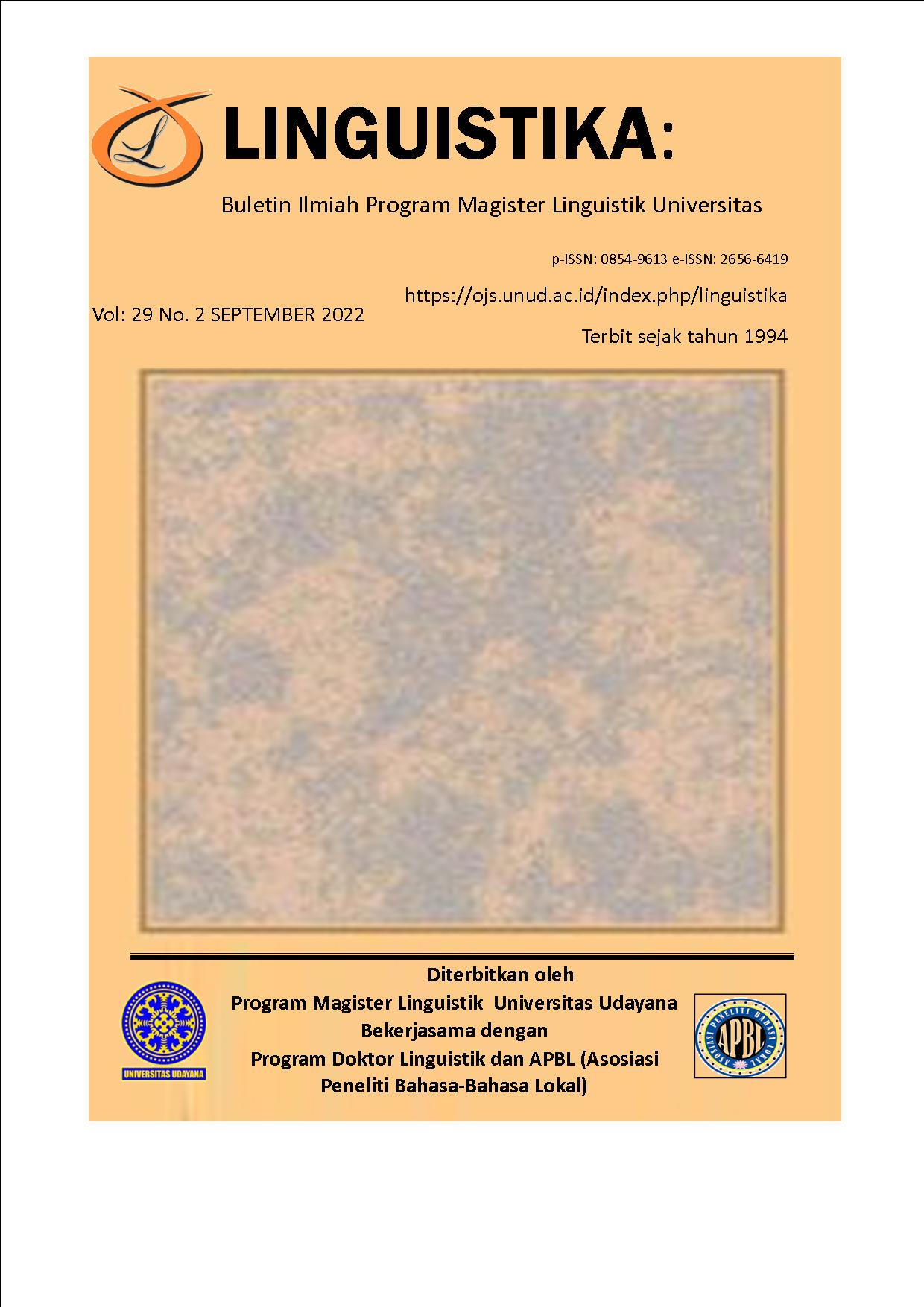Language Mixing in an Indonesian-Balinese Simultaneous Bilingual Child
Abstract
When children get regular and continual exposure to two or more languages, they can develop the competence to use those languages. However, the languages used by the children may include mixing, where features of different languages converge in single language use. The present research investigates the speech of a three-year-old child exposed to Indonesian and Balinese since birth. The study focused on analyzing the language mixing produced by the child. The child was observed for three months. The child was exposed to Indonesian by the parents and Balinese by grandparents and other extended family members. They all lived in the same compound. In collecting the data, diary notes were used, supplemented with video recordings. The result shows that language mixing occurred when the child substituted content words, phrases, and function words in both languages. The language mixing happens due to the salient of the words, the frequent use of the words or phrases in the child's environment, the availability of mixing in the input, and an effort to emphasize meaning. Pragmatically, the result shows that the child can use the two languages appropriately with different interlocutors.













